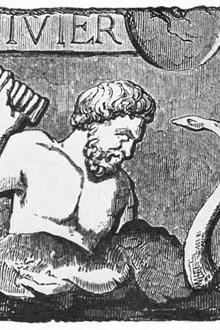Three Thousand Years of Mental Healing by George Barton Cutten (best large ereader txt) 📕

For a great many years physicians have recognized that not only are all diseases made worse by an incorrect mental attitude, but that some diseases are the direct result of worry and other mental disturbances. The mental force which causes colored water to act as an emetic, or postage-stamps to produce a blister, can also produce organic diseases of a serious nature. The large mental factor in the cause of diseases is generally admitted, and it seems reasonable to infer that what is caused by mental influence may be cured by the same means. There is no restriction in the power of the mind in causing disease, and should we restrict the mind as a factor in the cure? The trouble seems to be in the explanation. People ask, "How can the mind have such an effect upon the body?" and to the answer of this question we must now turn
Read free book «Three Thousand Years of Mental Healing by George Barton Cutten (best large ereader txt) 📕» - read online or download for free at americanlibrarybooks.com
- Author: George Barton Cutten
- Performer: -
Read book online «Three Thousand Years of Mental Healing by George Barton Cutten (best large ereader txt) 📕». Author - George Barton Cutten
The belief in the efficacy of the king's touch was general, and Lecky tells us its genuineness "was asserted by the privy council, by the bishops of two religions, by the general voice of the clergy in the palmiest days of the English Church, by the University of Oxford, and by the enthusiastic assent of the people. It survived the ages of the Reformation, of Bacon, of Milton, and of Hobbes. It was by no means extinct at the age of Locke, and would probably have lasted still longer, had not the change of dynasty at the Revolution assisted the tardy scepticism."180
In France there was the same belief in the efficacy of the royal touch. Philip I exercised the gift, but the French historians say that he was deprived of the power on account of the irregularity of his life. Laurentius reports that Francis I, when a prisoner in Spain, cured a great number of people of struma (scrofula). A paraphrase of the Latin verse which Lascaris wrote concerning this event is as follows:
Concerning the touching by the kings of France, Pettigrew says: "In the church of St. Maclou, in St. Denys, Heylin (Cosmograph., p. 184) says the kings of France, with a fast of nine days and other penances, used to receive the gift of healing the king's evil with nothing but a touch." Philip de Comines states, that the king always confessed before the cure of the king's evil. Butler (Lives of the Saints, vol. VIII, p. 394) says, 'The French kings usually only perform this ceremony on the day they have received the holy communion.' The historians who write under the first two families of the French kings are altogether silent as to the kings' curing the evil by the touching. (Veyrard Trav., p. 109.) Philip of Valois is reported to have cured 1400 people afflicted with the king's evil. Of Louis XIII, it was said that he had assigned all his power to Cardinal Richelieu, except that of curing the king's evil. Carte says, some of the French writers ascribe the gift of healing to their king's devotion toward the relics of St. Marculf, in the church of Corbigny, in Champagne: to which the kings of France, immediately after their coronation at Rheims, used to go in solemn procession. A veneration was also paid to this saint in England, and a room in memory of him, in the palace of Westminster, has frequently been mentioned in the Rolls of Parliament, and which was called the Chamber of St. Marculf, being, as Carte conjectures, probably the place where the kings used to touch for the evil. This room was afterward called the Painted Chamber. The French kings practised the touch extensively. Gemelli, the traveller, states, that Louis XIV touched 1600 persons on Easter Sunday, 1686.181 The words he used were, 'Le Roy te touche, Dieu te guérisse.' Every Frenchman received fifteen sous, and every foreigner thirty. The French kings kept up the practice to 1776."182
"Servetus," says Hammond, "who was not of a credulous mind, says in the first edition of his Ptolemy, published in 1535, that he had seen the king touch many persons for the disease, but he had never seen any that were cured thereby. But the last clause of this sentence excited the ire of the censor, and in the next edition, published in 1541, the words 'an sanati fuerint non vidi' were changed to 'pluresque sanatos passim audivi': 'I have heard of many that were cured.' Testimony in support of miracles has often been manufactured, but the natural obstinacy and truthfulness of Servetus would not admit of his giving his personal endorsement at the expense of his convictions."183
Within the last half-century we have had an example of the value of the royal touch. When cholera was raging in Naples in 1865, and the people were rushing from the city by thousands, King Victor Emmanuel went the rounds of the hospitals in an endeavor to stimulate courage in the hearts of his people. He lingered at the bedside of the patients and spoke encouraging words to them. On a cot lay one man already marked for death. The king stepped to his side, and pressing his damp, icy hand, said, "Take courage, poor man, and try to recover soon." That evening the physicians reported a diminution of the disease in the course of the day, and the man marked for death out of danger. The king had unconsciously worked a marvellous cure.184
It seems certain that there was not the efficacy in king's touch which was claimed for it, or it would not have been discontinued after having held sway for over seven hundred years. No doubt the quasi-religious character of the office of the sovereign helped much in the belief, and when such men as Charles II were able to heal, little connection between religion and healing could longer be thought possible, as far as the healing by king's touch was concerned.
The Hallowing of Cramp Rings was not unlike the king's touch. It is described by Bishop Percy in his Northumberland Household Book, where we have the following account: "And then the Usher to lay a Carpett for the Kinge to Creepe to the Crosse upon. An that done, there shal be a Forme sett upon the Carpett, before the Crucifix, and a Cushion laid upon it for the King to kneale upon. And the Master of the Jewell Howse ther to be ready with the Booke concerninge the Hallowing of the Crampe Rings, and Amner (Almoner) muste kneele on the right hand of the King, holdinge the sayde booke. When that is done the King shall rise and goe to the Alter, wheare a Gent. Usher shall be redie with a Cushion for the Kinge to kneele upon; and then the greatest Lords that shall be ther to take the Bason with the Rings and beare them after the Kinge to offer."
In the Harleian Manuscripts there is a letter from Lord Chancellor Hatton to Sir Thomas Smith, dated September 11, 158-, about a prevailing epidemic, and enclosing a ring for Queen Elizabeth to wear between her breasts, the said ring having "the virtue to expell infectious airs."
Andrew Boorde, already quoted, says: "The Kynges of England doth halowe euery yere crampe rynges, the whyche rynges, worne on ones fynger, dothe helpe them the whyche hath the crampe."185 Also, "The kynges majesty hath a great help in this matter, in hallowynge crampe rynges, and so given without money or petition."
In the account of the ceremony given by Hospinian, he states that "it was performed upon Good Friday, and that it originated from a ring which had been brought to King Edward by some persons from Jerusalem, and one which he himself hath long before given privately to a poor petitioner who asked alms of him for the love he bore to St. John the Evangelist. This ring was preserved with great veneration in Westminster Abbey, and whoever was touched by this relic was said to be cured of the cramp or of the falling sickness." Burnet informs us that Bishop Gardiner was at Rome in 1529, and that he wrote a letter to Ann Boleyn, by which it appears that Henry VIII blessed the cramp rings before as well as after the separation from Rome, and that she sent them as great presents thither. "Mr. Stephens, I send you here cramp rings for you and Mr. Gregory and Mr. Peter, praying you to distribute them as you think best.—Ann Boleyn."186
This ceremonial was practised by previous sovereigns and discontinued by Edward VI. Queen Mary intended to revive it, and, indeed, the office for it was written out, but she does not appear to have carried her intentions into effect.
167 T. J. Pettigrew, Superstitions Connected with the History and Practice of Medicine and Surgery, pp. 154 f.
168 E. Berdoe, The Origin and Growth of the Healing Art, p. 372.
169 Ecclesiastical History of Great Britain, I, p. 225.
170 Quoted by Berdoe, ibid., p. 371.
171 J. Brand, Popular Antiquities, pp. 257 f.
172 T. B. Macaulay, History of England, III, pp. 378 f.
173 A. D. White, History of the Warfare of Science with Theology, II, p. 47.
174 J. Brand, Popular Antiquities, III, p. 256.
175 T. J. Pettigrew, Superstitions Connected with the History and Practice of Medicine and Surgery, pp. 182-184.
176 Quoted by H. Tuke, Influence of the Mind upon the Body, pp. 359 f.
177 Life of Johnson, I, p. 42.
178 History of England, II, p. 302.
179 Vol. I, p. 323.
180 W. E. H. Lecky, History of European Morals, I, p. 364.
181 This was at Versailles.
182 T. J. Pettigrew, Superstitions Connected with the History and Practice of Medicine and Surgery, pp. 156 f.
183 W. A. Hammond, Spiritism and Nervous Derangement, p. 150.
184 C. L. Tuckey, Treatment by Hypnotism and Suggestion, p. 30.
185 E. Berdoe, The Origin and Growth of the Healing Art, p. 371.
186 T. J. Pettigrew, Superstitions Connected with ... Medicine and Surgery, p. 117.
CHAPTER X MESMER AND AFTERProbably no one would claim that the phenomena now grouped under the head of hypnotism were unknown before the end of the sixteenth century. They are as old as man, yes, probably older, since we know that some of the same phenomena apply to animals. But the claim might well be made that while isolated facts of this kind were well known, especially in the East, no scientific collaboration and explanation were attempted until this time.
As with all other departments of science, we may trace a gradual





Comments (0)